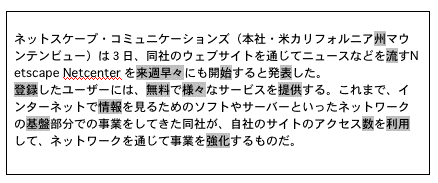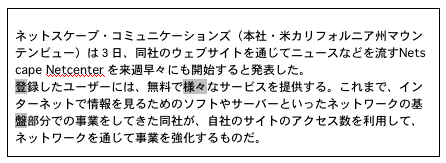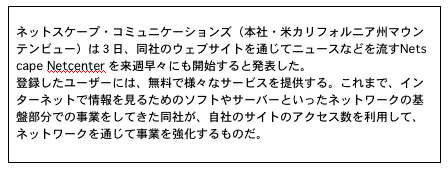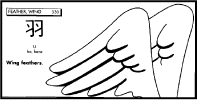
Learning kanji is one of the challenges for learners of Japanese as a second language, especially for those, who are from an alphabetic language. Ishida (1984) reports that 50 alphabet-based learners who have learned 600 kanji listed the following difficulties: writing kanji, sounds, meaning, how to memorize kanji, combination of kanji to make compound words, and stroke orders. In addition to these difficulties, which come from inherent nature of kanji, learners from an alphabetic background reported ” recognition and writing of thousands of kanji can be frustrating to a student with no kanji background”, “I feel discourage because after only three days, I don’t remember the kanji I just learned” ,”kanji is an extremely difficult alphabet to master”, to mention a few (kanji survey conducted by Douglas, 1999).
Problems in learning kanji are mainly divided into two groups: (1) problems related to affective factors, which are generally caused by learners’ misunderstanding about kanji, and (2) problems, which come from kanji themselves. First, this paper discusses about the affective factors and emphasizes importance of keeping the learners well informed about kanji learning, utilizing research findings and other evidence in order to lower their affective filters. Then the paper discusses about difficulty of learning kanji, and suggests some instructional supports, which are based on developmental differences in acquisition of kanji from elementary to advanced levels and kanji learning strategies.
Text 1. Readability with the knowledge of 100 most frequently used kanji

Text 2. Readability with the knowledge of 500 most frequently used kanji

Text 3. Readability with the knowledge of 1,000 most frequently used kanji

(朝日新聞、Internet Frontier: Silicon Valley Report, September 4, 1997. Retyped by the author.)
This misunderstanding is a result of a transfer of the knowledge of an alphabetic writing system in the learners’ first language to learning kanji. Like 26 alphabets, which are taught in the beginning of their literacy training, the learners tend to think they should learn all kanji at first. We, instructors, need to remind the learners that kanji should be considered as vocabulary, which are learned over a long period of time as the learners do in their first language. Since elementary school to college, they have been learning new vocabulary and expanding the size of the vocabulary in their language.
By calling the learners’ attention to the similarity in English, their affective filter can be lowered. Takebe’s example (1989) is cited here.
Letter "o" has number of different ways of pronunciation: oil, obey, son, cow, wolf, go, oral, do, book, tooth, door. The sound [?:] is in different letters: her, bird, turn, work, myrtle, err, purr, earn, amateur, journey, colonel.
When kanji is introduced after learning hiragana and katakana, the learners wonder why they need to learn kanji, which is an endless work from their perspective. I explain three advantages of kanji: (1) compactness, (2) meaning guessing from kanji to a certain degree, and (3) function of kanji as punctuation markers. Compactness of kanji is explained by having these two texts compared. The first one is a standard text which has kanji and hiragana. The second one is written without kanji.
| 日本人は、漢字を何字くらい使っているのであろうか。国立国語研究所の調査で、新聞では三一二三字、雑誌では三三二八字が使用されているということが報告されている。 |
| にほんじんは、かんじをなんじくらいつかっているのであろうか。こくりつこくごけんきゅうしょのちょうさで、しんぶんではさんぜんひゃくにじゅうさんじ、ざっしではさんぜんさんびゃくにじゅうはちじがしようされているということがほうこくされている。 |
(Cited from Douglas, M. 2001. A practical guide to learning kanji: For learners from an alphabetic background. McGraw-Hill)
The meaning of the kanji words can be guessed from kanji to a certain degree. The learners can guess the meaning of 何字、国語and 新聞 in the above text if they know what each kanji means. It is noted here, however that this advantage of kanji is limited to those kanji words, which are learned in the elementary level. The learners cannot use this guessing strategy to the kanji words in intermediate and advanced levels, which represent mostly abstract meaning. This will be discussed later.
Unlike alphabetic languages, there is no space between words and the use of commas is arbitrary in the Japanese convention of writing. Thus, it is difficult for the readers to quickly break a long continuing sentence into smaller grammatical units, if kanji is not used in a text. Noun and stems of verbs and adjectives are conventionally written by kanji. This means that kanji indicates the beginning of each unit. A sentence is split into small units as follows (double slash lines indicate unit borders).
e.g. 日本人は、//漢字を//何字ぐらい//使っているであろうか。
To the learners from an alphabetic background, kanji looks like a combination of complex nonsense lines. When they start learning kanji, they are told to learn four things all at once: pronunciation, meaning, writing, and stroke order of kanji, another burden of kanji learning.
Preparation of leaning kanji should be started earlier in order to gradually guide the learners toward kanji. When the first kana writing system is introduced, which is hiragana in most courses, emphasis should be placed to learn the correct stroke orders at this stage, which means less work later. When the learners learn the second kana, katakana, emphasize that katakana is a foundation to learn kanji because kanji is a combination of several katakana and some additional new lines. Straight line of katakana is also a feature to be shared with and applied to kanji. When the learners proceed to leaning kanji, they are encouraged to see internal structures of kanji and find familiar katakana or basic kanji in more complex kanji. Kanji 曜, for example, can be broken down to two katakana ヨ, katakana イ, basic kanji 日and some other new lines. This component analysis help the learners view kanji as a combination of familiar units instead of complex nonsense lines.
Section 1 discusses about affective factors, which the learners have and some attempts to lower the affective filters. It is important to eliminate negative psychological factors for learning, but it does not mean that there is no problems to learn kanji when the affective filter is lowered. It is still a great deal of challenge for the learners to learn the 1000 most frequently used kanji, especially at an intermediate level and beyond. Instruction, therefore, should provide the learners with a support at each level of learning from an elementary to an advanced level. Teaching kanji only at the beginning of the elementary level and having the learners study kanji by themselves at home thereafter fail to equip them with effective learning skills and to learn kanji in different developmental levels.
This section lays out learning goals and instructional focuses according to the developmental levels over the course of learning kanji..
The goals and focuses are described below .
First 100 kanji: Introduction of simple kanji such as pictographs and simple ideographs. Learners who are familiar to alphabet, a sound-base writing system, need to learn meaning-based system. Learners learn internal structures, meanings, sounds of kanji, and apply knowledge of stroke orders from kana study. At an early stage of this level, the learners display the following inter-language error, for an example, which indicates a lack of understanding of the concept of kanji.
e.g. メアリーさんは、としょかんにいきまし田。(kanji 田 is used for hiragana た)
They need to learn that kanji is used for nouns or stems of verbs and adjectives, and selection of kanji is based on the meaning and sound.
They also learn the difference of dimension in alphabet and kanji. The distinction of the meaning, for example, “dog” and “god” relies on a linear arrangement of the three letters in English, while kanji has two dimensions (horizontal and vertical) and definitions are signified by these two dimensions, 含 'to include" and 吟 'recite' for example (Tollini, 1992)
100~200 kanji: Introduction of compound kanji such as compound ideographs (e.g. kanji 明 means 'bright' which consists of 日 'sun' and 月 'moon'). Continuing training to learn internal structures, meanings, and sounds of kanji. Introduction of common radicals. Learners can distinguish similarity and difference of the parts of complex kanji. Learners use preferred memory strategies to learn kanji effectively.
200~400 kanji: Introduction of a large number of compound phonetic kanji. Instructional focuses are: 1) on learning multiple readings (ON 'Chinese reading’ and KUN 'Japanese reading') of compound phonetic kanji, 2) learning whole radical system, and 3) beginning to use kanji dictionary (paper dictionaries or electronic dictionaries), and utilization of computer software programs to learn kanji.
Upon introduction of ON reading, the following phonetic rule is introduced to reduce frustration as well as to learn ON reading effectively.
Among all phonetic compound, 57.6 % have this exact sound-letter correspondence like the above example, 32.7% have rhymes in vowel ending. Only 9.7 % do not have the sound-letter correspondence (Nomura, 1984).
400~1,000 kanji: Continuing study of compound phonetic kanji and expansion of sophisticated vocabulary. Custom-made memory strategies are used for learning new kanji as well as retain already learned kanji.
From the 200-400 level and beyond, kanji learning is more likely learning an increasing vocabulary. That is, kanji are learned in compound words, which consist of two or three kanji. Toyota (1995) found that intermediate students most frequently feel kanji is difficult. It is this level that learners from an alphabetic background start giving up learning kanji. It is this level, therefore that the learners needs instructional supports more than before, perhaps, so that they can continue learning kanji. The rest of the paper discusses about the possible instructional supports.
The description of the leaning goals, mentioned above, states utilization of the strategies. Providing strategy lessons to learn kanji is one of the support. Cognitive psychologists list two factors, which attribute to successful retention in memory: semantic elaboration and connection in the existing memory. Based on the studies in cognitive psychology, mnemonic technique was developed and it is used to learn kanji as a memory strategy.. Rowley (1992) uses visual imagery association. I added sound association to his work as follows so that association can be used to learn pronunciation of kanji as well as meaning (Douglas, 2001, p.31).
 習 meaning: learn, pronunciation: なら(う)
Visual imagery association: White 白 wings 羽 mean you need
training. (Rowley, 1992)
習 meaning: learn, pronunciation: なら(う)
Visual imagery association: White 白 wings 羽 mean you need
training. (Rowley, 1992)
Sound association is added to Rowley's visual association: Your wings are still NARROW (a keyword which is similar sound to the target kanji なら(う).
Another way of attempting to commit new information to memory is an analytic approach. An analytic approach is the same as component analysis, which was already discussed. Recognition of the pattern is crucial for the search of meaning (Christison, 1997). Element-based approach (Heisig, 1985) emphasizes the learning of the components of kanji. All parts of the kanji are assigned a specific meaning. Alprin (2002) elaborated this approach by different categorization of the element of kanji and modification of procedure.
Learners acquire these strategies over the course even without specific instructions. Douglas (1992) found that it took 4.1 years of kanji study for them to use a memory strategy. Strategy training can, however maximize efficiency in the kanji learning by shortening the trial and error process that learners have to go through to find appropriate strategies (Burke, 1996).
When leaning kanji proceeds to the intermediate level, the number of kanji to be learned continues to increase and the learners need to organize and reorganize their knowledge regularly. Semantic strategies (Cohen’s term, 1987) are those to clustering words by meaning. Basic Kanji Book (Kano et al, 1991) lists examples of grouping by meaning: 1) kanji suffix for places (-所 as in 研究所 'a research institute', -館 as in 図書館 'a library', 映画館 ' a movie theater', -室 as in 研究室 ' a professor's office', 教室 'a classroom'), 2) kanji suffix for occupation (-者 as in 医者 'a medical doctor', 学者 'a scholar', -員 as in 駅員 'a station employee', 会社員 'a company employee', -家 as in 音楽家 'a musician', 政治家 'a politician'), 3) kanji prefix (不- as in 不便な 'inconvenient', 不注意 'carelessness', 無- as in 無試験 'no examination', 無料 'no charge', 最- as in 最大 'the biggest', 最高 'the highest'), 4) kanji of feeling (楽しい 'pleasant', 悲しい 'sad', 笑う 'to laugh', 喜ぶ 'to be pleased', 怒る 'to angry'). Clustering words by grammatical functions (such as group of verbs, nouns, and adjectives) is also one of the strategies. Many compound words form verbs by adding する after them such as 勉強 'study' and 勉強する ' to study', 結婚 'marriage' and 結婚する 'to marry', 旅行 'trip' and 旅行する 'to travel' etc.
In this level most kanji appear in compounds (combination of multiple kanji). An obstacle of learning compounds is that the meaning of the compounds is not always predictable from the individual component kanji. Meaning of each kanji in a compound 経済 or 皮肉 does not help access to the meaning of the compound (Matsunaga, 1995: Mori et al., 1999). Mori et al. (1999) found that the ability to utilize information from kanji and the ability to use contextual information are not related to each other, and it is important to learn to utilize the information from multiple sources to guess the word meaning accurately, especially for the learners with a low language proficiency and tend to solely rely on information from kanji, but not from context.
My study found that the learners from an alphabet background (20 students in advanced level) performed better in a task in which they were asked to provide English meanings to kanji compounds presented in isolation than the learners from kanji background (18 advanced level students). In the same task presented in a context the results were opposite. The difference in the scores in each group of these two tasks is statistically significant. The results supports Mori et al.’s finding.
It is important to learn to utilize contextual information to guess the meaning of unknown kanji. When learners start reading authentic and unedited materials they encounter more unknown kanji than known kanji, which makes it difficult to guess their meaning from the context. Learners feel overwhelmed whey they see Japanese texts with so many kanji. At this stage it is important to train the learners to selectively attend to specific kanji in the text. Criteria of the selection of kanji is varied. It can be a list of kanji, which have been taught in previous courses. Or it can be a list of the most frequently used kanji in the Japanese newspapers and magazines. It also can be a list of kanji, which are in the Japanese Language Proficiency Test. Instructors can refer to these lists when they select kanji for their students to learn when using a textbook. Learners can select kanji they need to learn when they select materials by themselves while working for independent studies or project work.
Figure 1 shows an example of selection of kanji based upon a list of the 500 most frequently used kanji. The software program used is JWPce, which was developed by Glen Rosenthal at University of California, Los Angeles as a kanji learning tool. JWPce highlights the kanji in blue color, which are not in the list of the 500 target kanji. Learners exclude these colored kanji and can focus on kanji in black color as a target to learn. Instructors can make their own list of kanji instead of the most frequently used kanji, which enables the learners to know which kanji have been introduced over the courses so far.
Figure 1

JWPce also enables to count kanji in a text or in multiple texts and display their frequency (Figure 2). High frequency kanji provide learners with multiple exposure while reading the text, which helps learners familiarize those kanji or retain them better.
Figure 2

JWPce has other functions for learning kanji such as dictionary, kanji information, and radical look up. It is a free shareware for PC computers. It is downloadable from: http://www.physics.ucla.edu/~grosenth/jwpce.html
When target kanji is selected according to the levels of the Japanese Language Proficiency Test, Reading Tutor , a web-based free shareware, has the function to check the level of kanji. URL is: http://language.tiu.ac.jp/tools.html/input
Concluding this paper, I would emphasize the importance of learners’ self-selection of various learning strategies and computer-based learning tools. Learners are different in their leaning styles. Some are visually oriented and other are analytical. Uniformly prescribed approaches do not work for all learners. What instruction can do is introduce a variety of approaches of learning kanji, provide the opportunity to try them out, and let the learners choose the best fit for them unless instructional intervention is really necessary .
Alprin, S. 2002. Teaching kanji with components: Using an element-based approach in class. Snesei Online 21st Benkyookai. http://www.sabotenweb.com/bookmarks/about/scott.html
Burke, B. 1996. Maximizing efficiency in the kanji learning task. Doctoral dissertation. University of Queensland.
Christison, M. 1997. Applying Mind-Brain Principles to L2 Teaching. TESOL Matters, August/ September: 3.
Cohen, A. 1987. The Use of Verbal and Imagery Mnemonics in Second-Language Vocabulary Learning. Studies in Second Language Acquisition, 9: 43 - 62.
Douglas, M. 2001. A practical guide to learning kanji: For learners from an alphabetic background. McGraw-Hill.
Douglas, M. 1992. “Development of Orthography-Related Reading/Writing Strategies by Learners of Japanese as a Foreign Language.” Doctoral dissertation. University of Southern California. Dissertation Abstract International, 53, 3709-C.
Hayashi、O. (Ed.). 1982. Zusetsu Nihongo. Tokyo: Kadokawa.
Heisig, J. W. 1985. Remembering the Kanji. Tokyo, Japan: Japan Publications Trading Co.
Ishida, T. 1984. Kokusai-ka no naka de kanji towa. In H. Kaiho (Ed.), Kanji o kagaku suru, pp.155-190. Tokyo: Yuuhikaku.
Kano, C., Shimizu, Y., Takanaka, H., Ishii, R. and Akutsu, T. 1993. Intermediate Kanji Book: Kanji 1000 Plus. Tokyo: Bonjin-sha Co.
Krashen, S. & T. Terrell. 1983. The natural approach. California: Almany Press.
Matsunaga, S. 1995. The Role of Phonological Coding in Reading Kanji. Hawai’i: University of Hawai’i.
Mori, Y. & W. Nagy.1999.Integration of information from context and word elements in interpreting novel kanji compounds. Reading Research Quarterly v34 n1, pp80-101.
Nomura, M. 1984. “Kanji no Tokusei o Hakaru” (Measuring chracteristics of kanji). In H. Kaiho (Ed.) Kanji o kagakusuru (Scientific study of kanji).1-32. Tokyo, Japan: Yuuhikaku.
Tollini, A. 1992. “Hikanjikei Gakushuusha no Tame no Nyuumonki ni Okeru Kanji Gakushuu Shidoo no Ichikoosatsu” (A consideration on teaching kanji at the introductory level to non-kanji area students). Japanese Language Education Around the Globe, 2, 65-76.
Toyoda, E. 1995. “Kanji Gakushuu ni Taisuru Gakushuusha no Ishiki” (Learners’ feelings toward kanji study) Nihongo Kyooiku, 85, 101-113.
Back to 40th Benkyoukai page
Back to senseiOnline page
Back to Keiko Schneider's Bookmarks